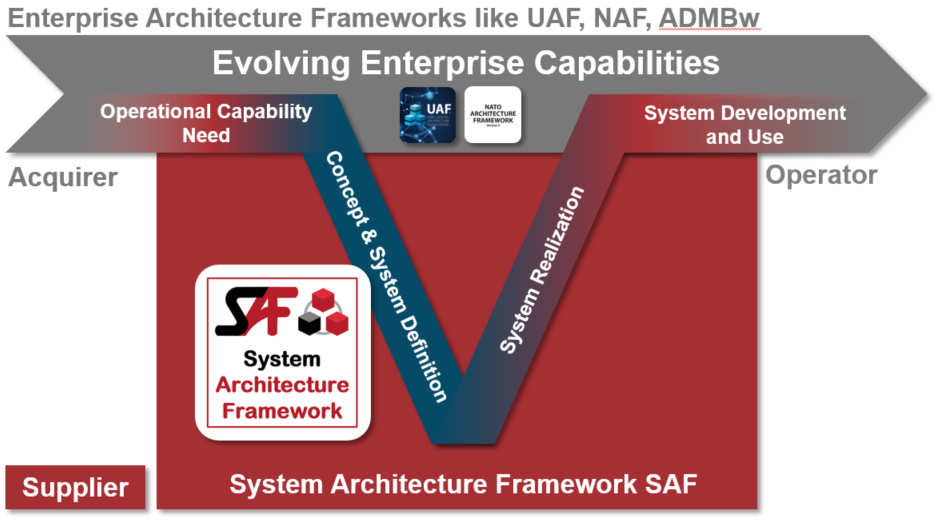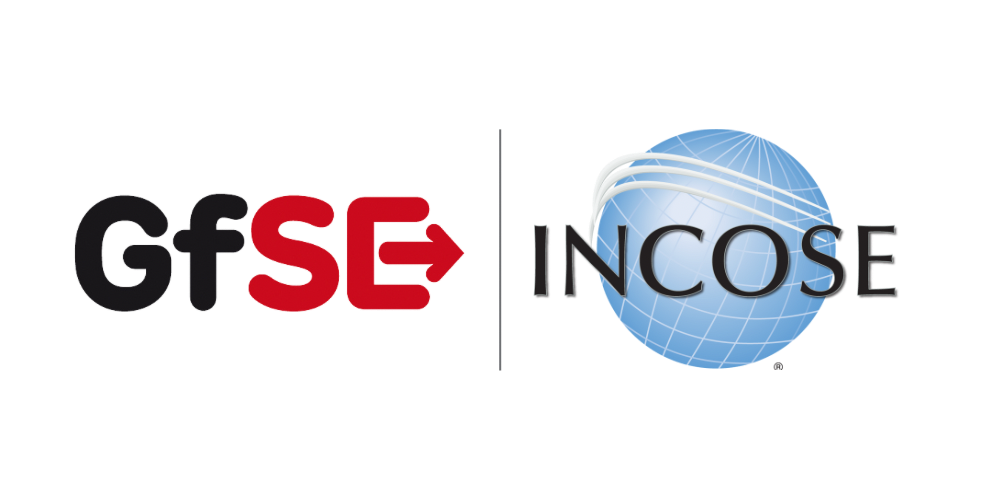Introduction
Inspired by the various enterprise architecture frameworks the System Architecture Framework (SAF) is a common, domain independent system architecture framework dedicated to support Model Based Systems Engineering (MBSE) of technical systems.
The SAF can be used stand-alone and also complementary to enterprise architecture frameworks. SAF starts where an enterprise architecture framework stops.

What is SAF?
- SAF is SysML based architecture framework intended to support the Model Based Systems Engineering (MBSE) of technical systems.
- SAF is an open and extensible toolbox. It is developed by the SAF Working Group of the german INCOSE chapter GfSE.
- SAF is based on a Systems Engineering Ontology and structured by viewpoint definitions.
- SAF supports 3 major MBSE Tools.
SAF Grid
The following table shows the organisation of the SAF in Domains and Aspects. The cells of the grid contain the Viewpoints, please click on the links in the table to navigate to detailled descriptions of Domains, Aspects and Viewpoints.
SAF Documentation
This site contains both documentation for users of SAF and developers of SAF. To understand how to use SAF, head over to Using SAF. To understand how we develop SAF, see Development Documentation. We always welcome contributions from our MBSE community to improve SAF, see how to contribute.
Example
The System Architecture Framework Specification application is demonstrated using the Fire Forest Detection System (FFDS) example, courtesy of Tim Weilkiens. The Fire Forest Detection System example is based on the publication SYSMOD - The Systems Modeling Toolbox, 3rd edition Pragmatic MBSE with SysML, Tim Weilkiens
Releases
This documentation is for the main branch of SAF that reflects the current state of development and it is updated as required. See the change report for an information about major changes.
The following SAF releases are available, each of which is managed in a separate branch:
Tool Implementations
The SAF specification is implemented by 3 tool specific profiles which are available in separate github repositories:
- Cameo Systems Modeler (by Dassault Systèmes)
- Engineering Systems Design Rhapsody (by IBM)
- Enterprise Architect (by Sparx Systems)
References
- Modellbasierter Bärentango mit dem System Architecture Framework, TdSE 2021, Michael Leute, Alexander Haarer, Sascha Ackva, Christian Lalitsch-Schneider, Markus Andres, Stephan Husung und Piotr Malecki
- System Architecture Framework (SAF), EMEASEC 2018, Rodrigo Batista, Alexander Haarer, Sascha Ackva, Christian Lalitsch-Schneider
- System Safety in SysML, TdSE 2015, T. Weilkiens, A. Berres, D. Endler, A. Haarer, C. Lalitsch-Schneider, M. Krammer, H. Martin
